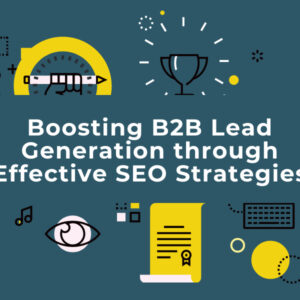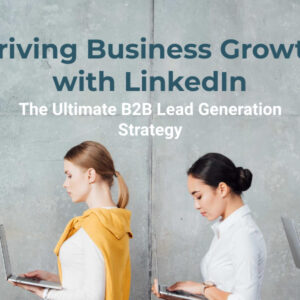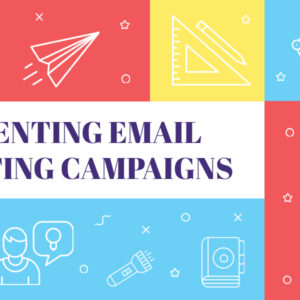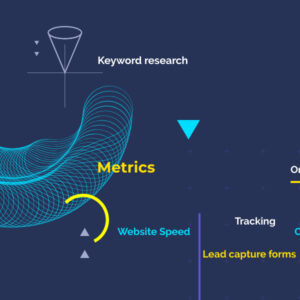Inbound marketing is a process used by brands to attract customers through various digital marketing channels. It helps businesses get found online, attract potential customers, and convert them into leads or customers. The main objective of inbound marketing is to attract potential customers to your business through various digital marketing channels rather than waiting for them to come to you. Inbound marketing involves focusing on creating helpful content that attracts the right kind of customers rather than advertising your products and hoping they find you. Another way to think about it is like this: outbound marketing is throwing things at trees (and hoping something sticks), while inbound marketing is planting an apple tree, tending to it carefully, and waiting for the apples to appear (which happens a lot faster).
What is Inbound Marketing?
Inbound marketing is a sales process that attracts potential customers through earned media, such as social media and earned search engine listings, rather than through paid media, such as paid search ads or sponsored advertisements. Essentially, inbound marketing is the opposite of outbound marketing. Inbound marketing uses various marketing channels to attract customers rather than relying on direct sales through methods like cold calling or sending sales letters and email blasts to prospective customers. There are eight main pillars of inbound marketing: SEO, content marketing, social media, email marketing, customer service, content implementation, lead generation, and conversion rate optimization. Inbound marketing efforts center on growing a company’s audience and increasing engagement with existing customers while decreasing marketing costs.
Why Is Inbound Marketing Important for Your Business?
If you’re reading this, chances are you’ve already been exposed to some form of inbound marketing. You’ve likely seen an ad in a newspaper or magazine, clicked on a Google ad, or heard about a new product via a Facebook ad. You may have even purchased something advertised on TV or seen a billboard on the way to work. We’ve all been on the receiving end of outbound marketing, including direct mail, email campaigns, TV and radio ads, and even door-to-door sales. And while outbound marketing can be effective, it also has a downside: you’re interrupting the daily lives of potential customers. Inbound marketing is different. It’s about pulling people into your world rather than shoving your message in their face.
Step by step Guide to Inbound Marketing
Research and Analysis
The first step is to conduct market research to identify your target audience. Once you have this information, you can start mapping out a content strategy. Make sure that everything you create is relevant to your target audience. You can also improve your content strategy by including keywords that your target audience is likely to use when searching for products or services like yours. You can use a keyword research tool to find out which keywords are best for your business and how many people are searching for them.
Building Your Online Presence
Once you’ve created your content, the next step is to build your online presence. This is where you drive traffic to your website by promoting your content through various online channels. There are several ways to do this.
Grow Your Email List
Now that you’ve attracted visitors to your site, the next step is to drive them to sign up for your email list. Studies show that email remains one of the best ways to convert leads into customers, so it’s crucial to collect as many email addresses as possible.
Drive Traffic to Your Site
Once people start coming to your website, you want to make sure that they don’t leave. There are various ways to keep your site visitors engaged. You can create useful blog posts, offer e-books or whitepapers, or host webinars to keep people on your site.
3 Strategies of Effective Inbound Marketing
SEO
SEO is crucial for every business, but it’s also something you should think about before launching a new campaign. SEO is all about increasing your website traffic through organic searches. This means you’re not paying for clicks like you would with PPC or Facebook ads. SEO is all about making your website and content more attractive to search engines like Google. This means that you’re building your site for people, but you’re also hoping to rank well for keywords that potential customers might search for.
Content Marketing
Content marketing is a great way to drive traffic and build your brand. This type of marketing is all about creating valuable, helpful content and sharing it across multiple channels. This could include blogging, creating e-books, videos, podcasts, and more. The goal is to create content that’s valuable to your audience.
Social Media
Social media can be a great way to reach your audience, but it can also be challenging to manage campaigns. You can use social media for inbound marketing by creating content and posting it to your page. You can also repost other helpful content from other sources. You can even take it a step further and hire a social media manager to help you manage your campaigns.
Key takeaway
Inbound marketing is a long-term strategy that requires patience and endurance. It may take several months, or even years, to see a significant increase in leads or sales from your efforts. That’s why it’s so important to commit to the process and not get discouraged if you aren’t seeing the results you expected right away. The best way to ensure success with inbound marketing is to hire a marketing agency like Nyamga Done-For-You Business Services that specializes in this type of marketing. Nyamga will be able to help you create an effective strategy and put it into action across all the major digital marketing channels.








This Post Has One Comment